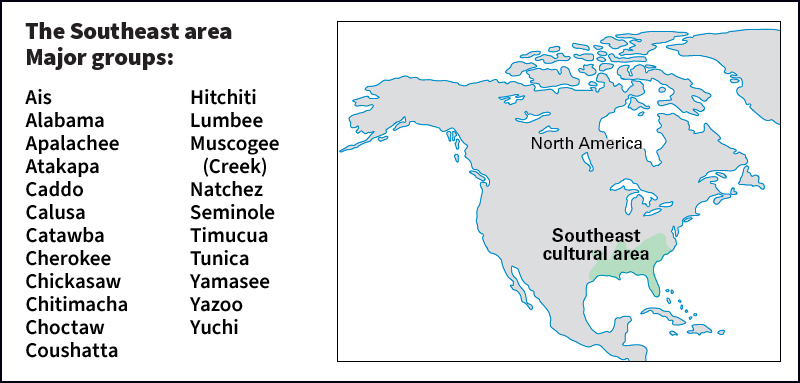Choctaw << CHOK taw >> are a Native American tribe that originally lived in what is now Alabama and Mississippi. They hunted and raised corn and other crops. One of their chief religious ceremonies was a harvest celebration called the Green Corn Dance. According to one legend, the Choctaw were created at a sacred mound called Nanih Waiya, near Noxapater, Mississippi.

In 1540, the Spanish explorer Hernando de Soto led the first European expedition through Choctaw territory. Fighting broke out after the Choctaw refused to supply the Spaniards with a guide and transportation. Several Spaniards and many Choctaw were killed.
In 1830, the United States government passed the Indian Removal Act. This act called for eastern Indians to be moved west to make room for more white settlers. The government then forced the Choctaw to sign the Treaty of Dancing Rabbit Creek. The treaty exchanged the tribe’s eastern land for an area in the Indian Territory, in what is now Oklahoma. About 14,000 Choctaw moved there in several groups during the early 1830’s. About a fourth of the Indians died on the journey. About 5,000 Choctaw remained in Mississippi.
The Choctaw who moved to the Indian Territory established their own government and school system. During the American Civil War (1861-1865), the Choctaw fought for the Confederacy. After the South lost the war, the Choctaw were forced to give up much of their land. The tribal government was dissolved by 1907, when Oklahoma became a state. In the 1970’s, Congress again recognized the tribe’s right to elect its own chief.
According to the 2020 census, there are about 105,000 Choctaw. About 52,000 live in Oklahoma, and about 7,300 live in Mississippi as a separate tribe. Many Choctaw are farmers or foresters.
See also Five Civilized Tribes.
